As devoted pet parents, we often want to share every aspect of our lives with our beloved canine companions, and that includes food. However, despite their pleading eyes and undeniable charm, there are many common human foods that can be incredibly dangerous, even fatal, for dogs. While the thought of sharing a savory bite of meat might seem harmless, understanding What Meat You Should Not Feed Your Dog is crucial for their health and well-being. This comprehensive guide will not only highlight specific meat-related dangers but also cover a broader spectrum of toxic foods that every dog owner needs to be aware of.
Feeding your dog the wrong food can lead to a range of issues, from mild digestive upset to life-threatening emergencies. The key to responsible pet ownership is vigilance and knowledge. By familiarizing yourself with these hazardous items, you can create a safe environment and a healthy diet for your furry friend. Remember, a dog’s digestive system and metabolism are vastly different from a human’s, making certain substances profoundly toxic to them. To ensure your puppy starts on the right paw, it’s also important to know what can i give my puppy to eat safely and appropriately for their age.
Meats & Meat Products Dogs Should Never Eat
While meat is a staple of a dog’s diet, the way it’s prepared, the type of meat, and additional ingredients can turn a nutritious meal into a dangerous one. When considering what meat you should not feed your dog, focus on these categories:
Processed & Fatty Meats
Many human-grade processed meats are loaded with ingredients that are detrimental to canine health. This includes:
- Hot dogs, bacon, ribs, fried chicken: These are often high in fat, sodium, and sometimes spices. Excessive fat can trigger pancreatitis, a painful inflammation of the pancreas that can be severe, especially for breeds like Miniature Schnauzers and Yorkshire Terriers. High sodium content can lead to sodium ion poisoning, causing extreme thirst, frequent urination, vomiting, diarrhea, and kidney damage.
- Deli meats (e.g., ham, bologna, salami): These processed meats contain high levels of sodium, nitrates, and other preservatives that are unhealthy for dogs. Regular consumption can contribute to heart problems and other long-term health issues.
- Highly seasoned meats: Meat cooked with onions, garlic, excessive salt, or other spices (like chili powder) should be strictly avoided. While a dog might enjoy the taste, these seasonings can cause significant harm.
If your dog has been diagnosed with pancreatitis, understanding what should a dog with pancreatitis not eat is absolutely critical for managing their condition and preventing painful flare-ups.
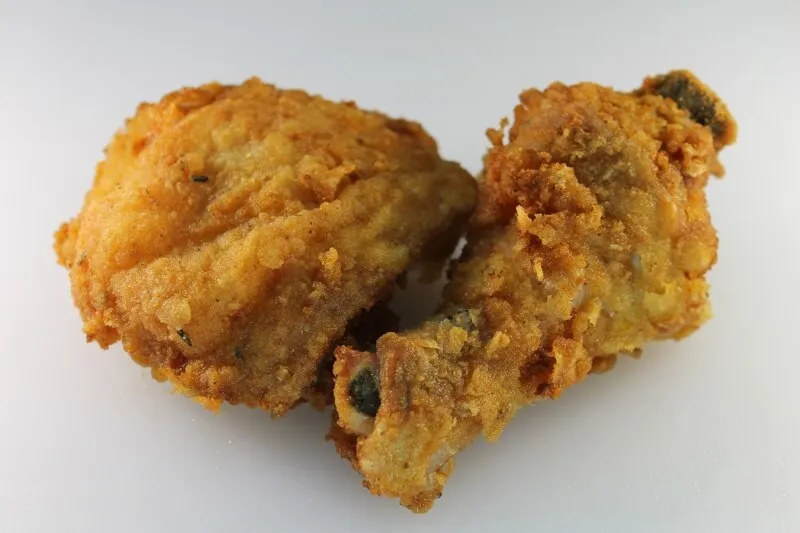 A plate of greasy fried bacon and a hot dog, examples of fatty meat dogs should not eat due to pancreatitis risk.
A plate of greasy fried bacon and a hot dog, examples of fatty meat dogs should not eat due to pancreatitis risk.
Cooked Bones
While it might seem natural to give your dog a leftover bone, cooked bones from any type of meat (chicken, beef, pork, etc.) are extremely dangerous. Cooking makes bones brittle, causing them to splinter easily when chewed. These sharp fragments can:
- Cause choking.
- Get lodged in the throat or digestive tract.
- Puncture internal organs.
- Lead to severe constipation.
Always dispose of cooked bones safely where your dog cannot access them.
Raw or Undercooked Meat
While some proponents advocate for raw food diets, feeding raw or undercooked meat to your dog carries significant risks, especially if not handled properly. These risks include:
- Bacterial contamination: Raw meat can harbor harmful bacteria like Salmonella, E. coli, and Listeria, which can cause severe gastrointestinal illness in dogs (vomiting, diarrhea, lethargy) and can also pose a risk to human household members through cross-contamination.
- Parasites: Raw meat can contain parasites that can infect your dog.
- Nutritional imbalance: Unless carefully formulated by a veterinary nutritionist, homemade raw diets can be nutritionally unbalanced, leading to deficiencies or excesses that harm your dog over time.
For comprehensive advice on a balanced diet, it’s helpful to explore resources on what can food can dogs eat to ensure they receive all necessary nutrients safely.
Other Dangerous Foods to Keep Away From Your Dog
Beyond specific meat preparations, many other common foods pose serious threats to your dog’s health. It’s crucial to prevent your dog from accessing any of the following items.
1. Chocolate
A melt-in-your-mouth delight for humans, chocolate is highly toxic to dogs. It contains caffeine and theobromine, two stimulants that dogs metabolize very slowly. These substances can cause a dog’s heart rate to skyrocket, blood pressure to increase, and can lead to muscle tremors, seizures, and even death. The darker the chocolate, the higher the concentration of these harmful compounds, making baker’s chocolate and semi-sweet varieties particularly dangerous. Smaller breeds are often more susceptible to smaller amounts of chocolate.
 A curious dog looking at a bar of dark chocolate, a food dogs should not eat due to toxicity.
A curious dog looking at a bar of dark chocolate, a food dogs should not eat due to toxicity.
2. Gum and Candy
While the idea of a dog chewing gum might seem funny, it’s a serious hazard. Dogs don’t understand how to chew and dispose of gum and are likely to swallow it, leading to choking or blockages in their digestive system. Chewy candies like caramel or taffy can pose similar risks. Hard candies can also fracture teeth. Beyond the physical hazards, if the gum or candy contains Xylitol, it introduces a much more severe threat.
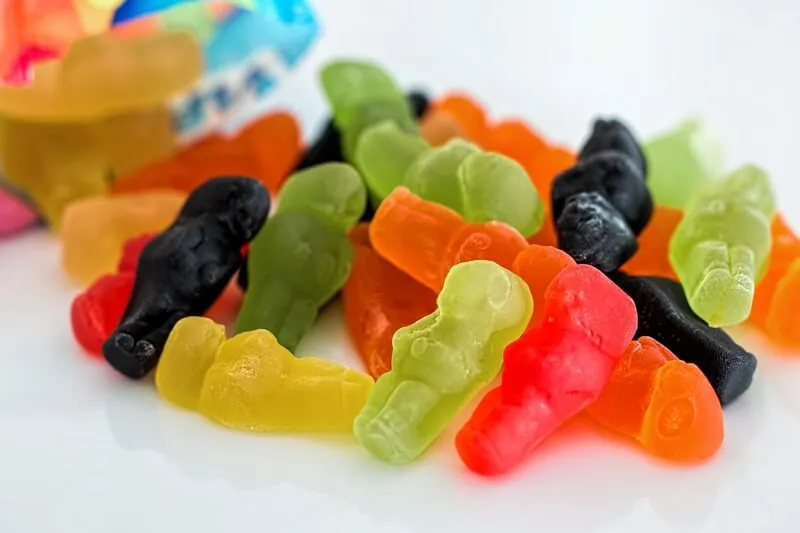 A dog sniffing a piece of chewing gum and colorful candy, common household items dogs should avoid.
A dog sniffing a piece of chewing gum and colorful candy, common household items dogs should avoid.
3. Xylitol
Xylitol is a sugar substitute found in a surprising number of products, including sugar-free gum, candy, mints, desserts, certain yogurts, and even some peanut butters. For dogs, ingesting Xylitol causes a rapid and severe drop in blood sugar (hypoglycemia), which can lead to seizures, liver failure, and even death. Always check ingredient labels carefully before offering any human food item to your dog, especially peanut butter.
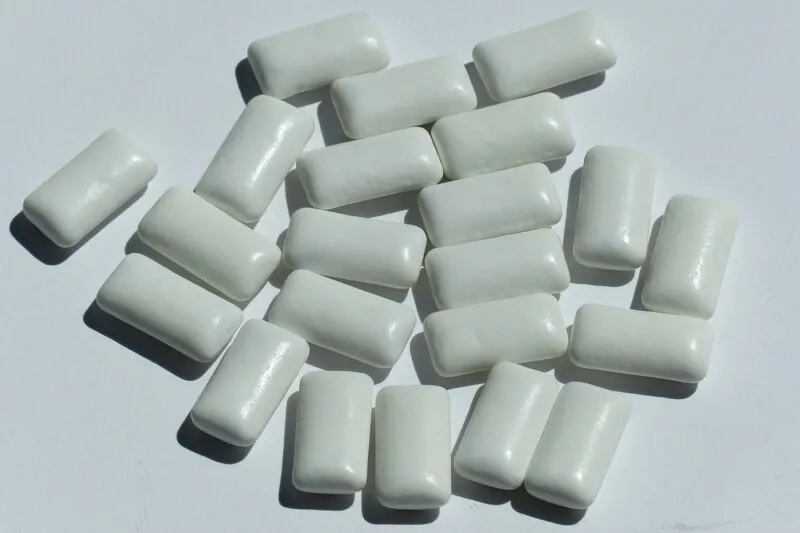 An open container of sugar-free gum containing xylitol, a dangerous sweetener for dogs.
An open container of sugar-free gum containing xylitol, a dangerous sweetener for dogs.
4. Grapes
Grapes are highly toxic to dogs, capable of causing sudden and severe kidney failure. Even a single grape can trigger a dangerous reaction in some dogs, so it’s vital to keep all grapes and products containing them (like fruit salads) completely out of paw’s reach. If you suspect your dog has eaten grapes, seek immediate veterinary attention.
 A bowl of fresh green and red grapes, a fruit that is highly toxic and should not be given to dogs.
A bowl of fresh green and red grapes, a fruit that is highly toxic and should not be given to dogs.
5. Raisins
Raisins are simply dried grapes, meaning they carry the exact same toxicity risk as their fresh counterparts. They are particularly deceptive because they often hide in baked goods like cookies, trail mix, and oatmeal, which dogs might eagerly gobble up. The concentrated form might even make them more potent.
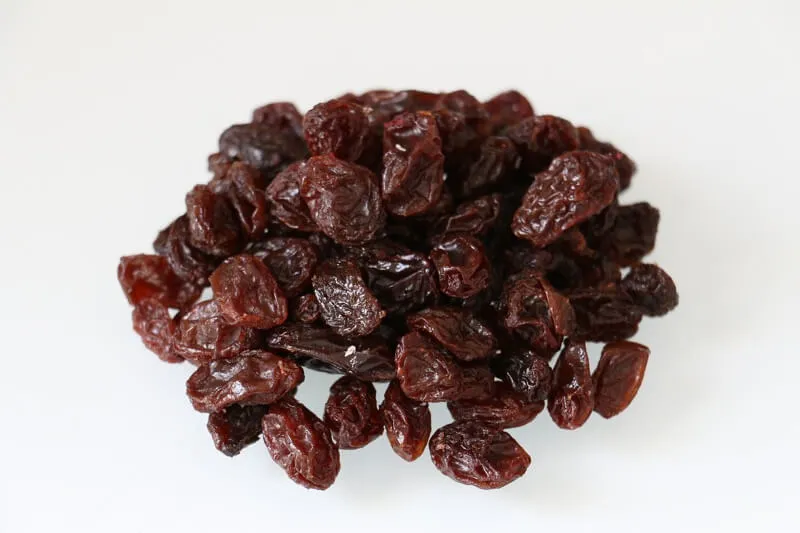 Dried raisins scattered on a surface, emphasizing that these dried grapes are harmful for dogs.
Dried raisins scattered on a surface, emphasizing that these dried grapes are harmful for dogs.
6. Macadamia Nuts
While the exact toxic compound isn’t fully understood, macadamia nuts can cause a range of adverse reactions in dogs, including severe stomach upset, vomiting, weakness, hyperthermia (elevated body temperature), and tremors. These symptoms usually appear within 12 hours of ingestion and can last for 24 to 48 hours. They are often found in cookies and other baked goods.
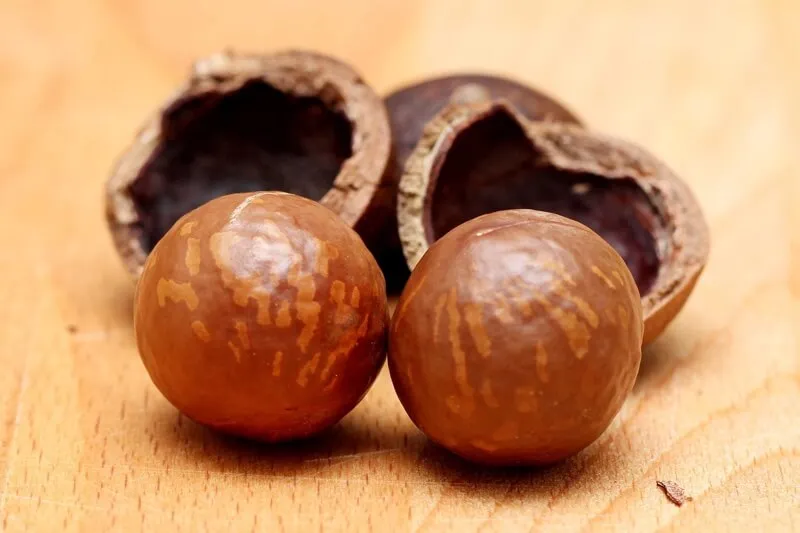 Macadamia nuts in a small bowl, a type of nut that can cause severe illness in dogs.
Macadamia nuts in a small bowl, a type of nut that can cause severe illness in dogs.
7. Avocados
Avocados contain a fungicidal toxin called persin. While generally considered harmless to humans, persin can cause vomiting and diarrhea in dogs, and potentially more serious issues in other animals. The highest concentration of persin is found in the leaves, bark, skin, and pit of the avocado. It’s best to err on the side of caution and keep avocados, especially guacamole, away from your dog.
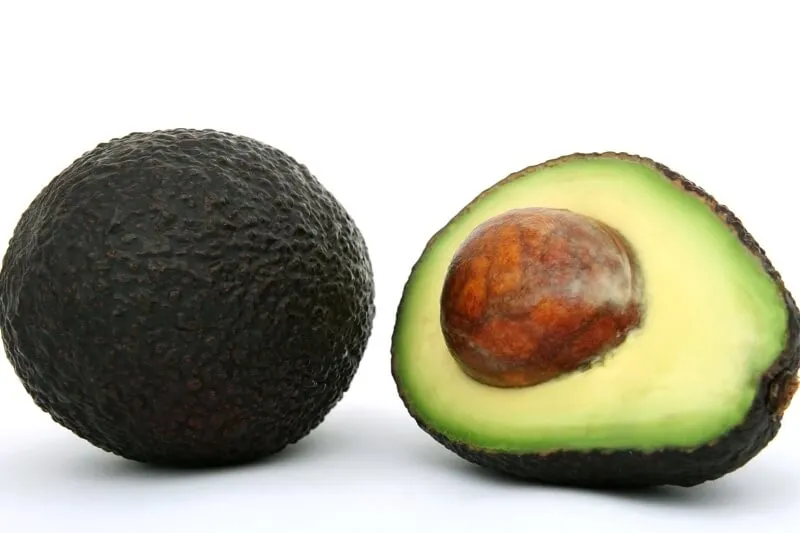 Freshly sliced avocado, illustrating a fruit containing persin that can be toxic to dogs.
Freshly sliced avocado, illustrating a fruit containing persin that can be toxic to dogs.
8. Onions
Onions, along with other members of the Allium family (like garlic, chives, and leeks), contain compounds that can damage a dog’s red blood cells, leading to hemolytic anemia. This condition prevents red blood cells from carrying oxygen efficiently throughout the body and can be fatal. All forms of onion—raw, cooked, dehydrated, or powdered—are dangerous. Even small amounts over time can cause problems. Dogs might eat dropped slices or pearl onions, or consume onion powder hidden in other foods.
 Whole and sliced red onions, a common vegetable harmful to dogs' red blood cells.
Whole and sliced red onions, a common vegetable harmful to dogs' red blood cells.
9. Garlic
Similar to onions, garlic contains thiosulphates that are toxic to dogs’ red blood cells, causing anemia. Garlic is considered even more potent than onions. While many dogs might not be drawn to raw garlic cloves, they can easily ingest it in cooked dishes, sauces, or garlic powder. Always store garlic and garlic powder securely.
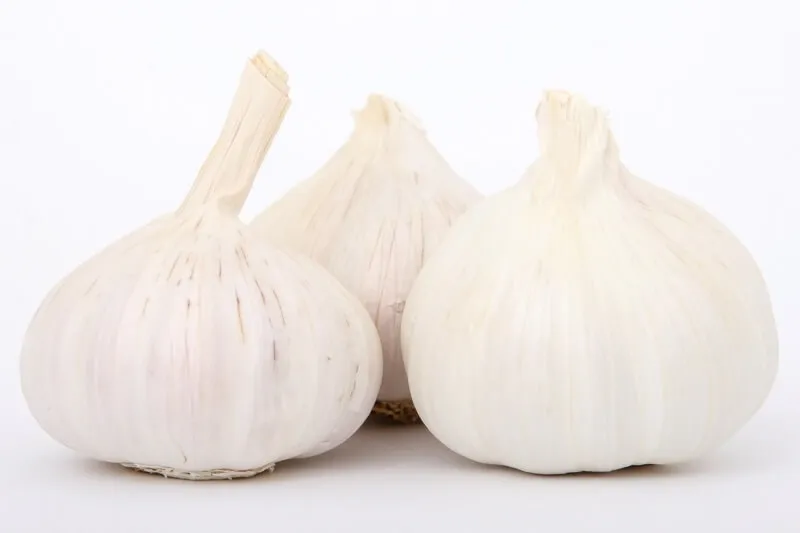 Garlic cloves and a chopped garlic jar, highlighting a spice dogs should not eat.
Garlic cloves and a chopped garlic jar, highlighting a spice dogs should not eat.
10. Salt
While dogs need some sodium in their diet, excessive salt intake is extremely harmful. Too much salt, whether from a salt shaker, salty snacks like potato chips, pretzels, or popcorn, can lead to sodium ion poisoning. Symptoms include excessive thirst and urination, vomiting, diarrhea, lethargy, tremors, and in severe cases, seizures and coma. It’s best to avoid giving dogs salty human foods altogether.
 A salt shaker next to a bowl of potato chips, demonstrating high-sodium foods dogs should avoid.
A salt shaker next to a bowl of potato chips, demonstrating high-sodium foods dogs should avoid.
11. Tea Leaves
Just like chocolate and coffee, tea leaves contain caffeine, which is a stimulant that is toxic to dogs. While your dog might not be interested in brewing tea, discarded tea bags can still contain enough caffeine to be dangerous if ingested. Store tea bags securely and ensure used mugs with tea bags are out of reach.
 Tea bags and loose tea leaves, sources of caffeine that are toxic to dogs.
Tea bags and loose tea leaves, sources of caffeine that are toxic to dogs.
12. Raw Yeast Dough
If you’re baking bread or other items with raw yeast, keep the dough far away from your dog. The yeast in raw dough can continue to expand in your dog’s warm stomach, causing painful gas, severe bloating, and potentially a life-threatening condition called gastric dilatation-volvulus (GDV), or bloat, where the stomach twists. Furthermore, as the yeast ferments, it produces alcohol, risking alcohol intoxication in your dog.
 Raw yeast dough rising in a bowl, a dangerous food for dogs that can cause bloating and alcohol intoxication.
Raw yeast dough rising in a bowl, a dangerous food for dogs that can cause bloating and alcohol intoxication.
13. Spoiled Foods
Your garbage can be a treasure trove of dangerous items for a curious dog, especially spoiled or moldy foods. These can cause not just stomach upset, but some molds contain mycotoxins that can lead to severe muscle tremors, seizures, and other neurological issues. Always secure your garbage bins, both indoors and outdoors, to prevent accidental ingestion.
 Moldy leftovers in a garbage can, representing spoiled foods that are harmful for dogs.
Moldy leftovers in a garbage can, representing spoiled foods that are harmful for dogs.
14. Coffee
Coffee, whether brewed, ground, or in whole bean form, is highly toxic to dogs due to its caffeine content. Used coffee grounds also retain significant amounts of caffeine and should be disposed of carefully. Ingesting coffee can cause hyperactivity, increased heart rate, tremors, and seizures, similar to chocolate poisoning.
 A cup of brewed coffee next to coffee beans, a highly caffeinated beverage toxic to dogs.
A cup of brewed coffee next to coffee beans, a highly caffeinated beverage toxic to dogs.
15. Alcohol
Any product containing alcohol, from alcoholic beverages to certain foods or even raw yeast dough, can be extremely dangerous for dogs. Dogs are much more sensitive to alcohol than humans, and even small amounts can lead to alcohol poisoning, causing symptoms like vomiting, disorientation, incoordination, central nervous system depression, tremors, hypothermia, coma, and even death. The effects are amplified in smaller breeds. Never intentionally give alcohol to your dog, and be vigilant at parties where drinks might be left unattended.
 A glass of alcoholic beverage, symbolizing drinks that are extremely dangerous for dogs.
A glass of alcoholic beverage, symbolizing drinks that are extremely dangerous for dogs.
What Dogs are at Risk?
While all dogs, regardless of breed, size, or age, are susceptible to the dangers of toxic foods, some may be at higher risk due to their personality. Dogs that are particularly curious, possess a strong scavenging instinct, or are prone to putting everything in their mouths will require closer supervision. Even well-behaved dogs can be tempted by an unattended plate or a dropped morsel. Providing appropriate, safe options for your dog is key, especially if you have a young pup. Knowing what should a 1 month old puppy eat can prevent them from seeking out harmful alternatives.
 A dog owner calling a veterinarian after a suspected poisoning incident, illustrating dog poison emergency tips.
A dog owner calling a veterinarian after a suspected poisoning incident, illustrating dog poison emergency tips.
Dog Poison Emergency Tips
Despite your best efforts, accidents can happen. If you suspect your dog has ingested any harmful food or substance, it’s vital to act quickly and calmly.
- Contact your veterinarian immediately. If your regular vet is unavailable, seek emergency veterinary care.
- Contact an animal poison control center. Organizations like the ASPCA Animal Poison Control Center (APCC) are available 24/7. Have the product name, approximate amount ingested, and your dog’s weight ready.
- Stay calm. Panicking can hinder your ability to think clearly and provide necessary information.
- Never try to treat your dog without professional advice. Inducing vomiting inappropriately can cause further harm. Your vet or the poison control center will guide you on the best course of action.
- Gather information. Bring any packaging or samples of the ingested substance to the vet.
- Be prepared for potential treatments. Depending on the situation, your vet may need to perform diagnostic tests, induce vomiting, administer IV fluids, provide activated charcoal, or prescribe medications. Hospitalization may be necessary in severe cases.
Remember, prompt veterinary intervention can make a critical difference in the outcome of a poisoning incident. Planning ahead for potential emergencies can also provide peace of mind. For instance, understanding what can dogs eat when sick can help you manage milder ailments at home, but for suspected poisoning, professional help is non-negotiable.
Conclusion
Ensuring your dog’s safety starts with a thorough understanding of what foods are off-limits, particularly when it comes to what meat you should not feed your dog. From fatty, processed meats and splintering cooked bones to common human treats like chocolate, grapes, and items containing xylitol, the list of dangers is extensive. By being vigilant about food safety and educating yourself on potential toxins, you create a healthier, safer environment for your canine companion.
Always prioritize your dog’s well-being by feeding them a balanced diet specifically formulated for their needs and keeping all potentially harmful human foods out of reach. In case of an emergency, do not hesitate to contact your veterinarian or a pet poison control center immediately. Your quick action and knowledge can be life-saving. Stay informed, stay cautious, and enjoy many happy, healthy years with your beloved dog!
